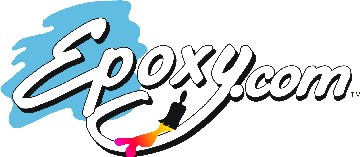How do I stop chemicals gas vapors from contaminated soils passing though a concrete slab? This is a question I get frequently from owners and environmental mitigation experts.
Background
Chemical contamination vapors tend to pass though a concrete slab and get into the air above. Stopping the migration of the gas through a slab is frequently a requirement of repurposing a space.
The following steps can be used to mitigate chemical vapors into your space above it. Without the right tools these vapors in the air from contamination under that slab can be quite pervasive.
Each job needs to be evaluated on an individual bases. The tools below make the solution less evasive.
Cracks through the Concrete Slab
The most direct way for soil contamination gasses to get in is through cracks. Cracks are the path of least resistance, so most of your vapors come through cracks in the floor. That is a very easy fix Product #684LV – Methyl Methacrylate Crack Healer and Sealer.
The #684LV has about the viscosity (thickness) of diesel fuel. That makes it easy to gravity feed into small cracks small porous areas of the concrete. It welds the cracks back together with a bond strength that is greater than the tensile strength of the concrete. In other words structurally you have the monolithic structure that the concrete was intended to be.
Expansion Joints
Expansion joints are the also a very direct route for vapors to come in. To seal these joints use Product #632 – Chemical Resistant Joint Filler. This is a highly chemical resistant joint filler. It will not only keep the vapors out. If there is going to be a chemical exposure to the surface there will it will stop the chemicals from attacking your concrete and further contaminating the soils below it.
Sealing the Surface of the Concrete Slab.
The next step is to prime the concrete with Product #12 Chemical Resistant Primer / Sealer.
This is where there is a couple of ways to go. You can apply an additional coat or coats of the #12 or go on to Coating the Concrete Slab below. Our optional translucent Synthetic Anti-Skid Fine may be added to the #12 if it is used in additional coats as a clear sealer.
The Product #12 Primer Sealer can also be mixed with silica sand and used as a patching material for potholes and otherwise damaged concrete if required.
Coating the Concrete Slap
In many cases you will want to install a coating over the concrete slab. There are a number of options for doing this but here are a few of the most common ones. The biggest difference between these coatings is the chemical resistance. Please See Chemical Resistance Chart for a comparison of chemical resistance of the products below. All of these products are 100% solid, zero voc. All of the coatings in this section are highly durable and resist the abrasion of traffic.
- Product #1 a 100% Solids General All Purpose Epoxy Coating with Good Chemical Resistance
- Product #2 a 100% Solids Chemical Resistant Epoxy Coating – more Chemical Resistance.
- Product #630 – 100% Solids Novolac Epoxy Coating – Almost the best chemical resistance, but with good UV stability.
- Product #633 – a work-horse 100% Solids Novolac Epoxy Coating – Best chemical resistance, not as good UV stability as 630.
UV Resistant Top-Coating
For jobs that will see direct sunlight. It may be desirable to add an ultra violet (UV) Resistant top coating for the systems above.
- Product #442 – Shinny duel component UV resistant Water Based Urethane



 Posted by Norm Lambert
Posted by Norm Lambert  This article is written in two parts. This section will deal with all the uses of
This article is written in two parts. This section will deal with all the uses of 